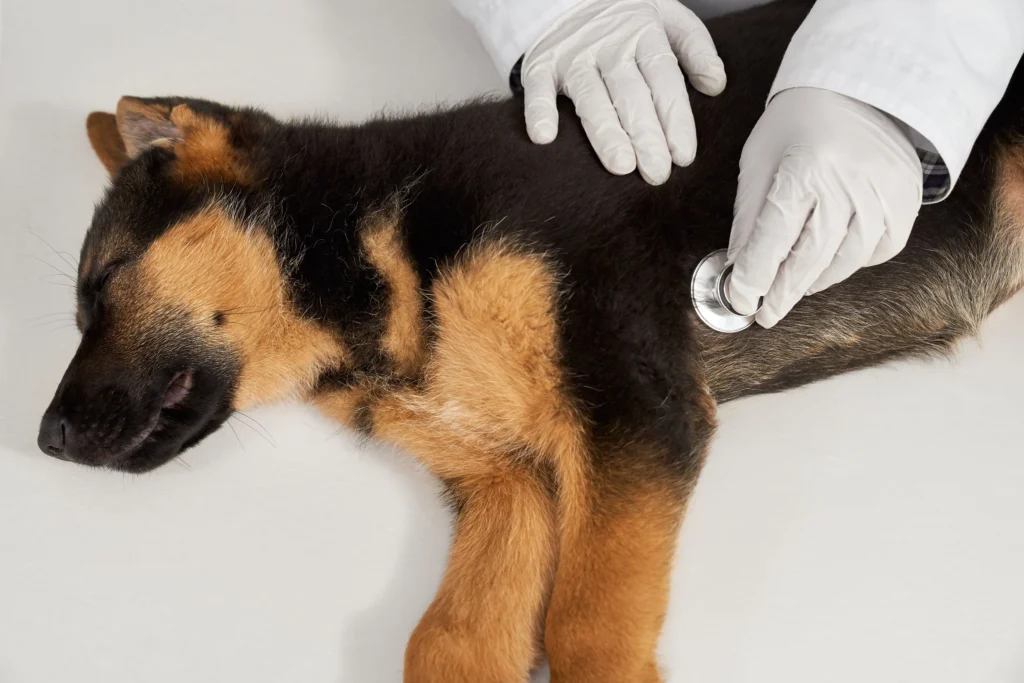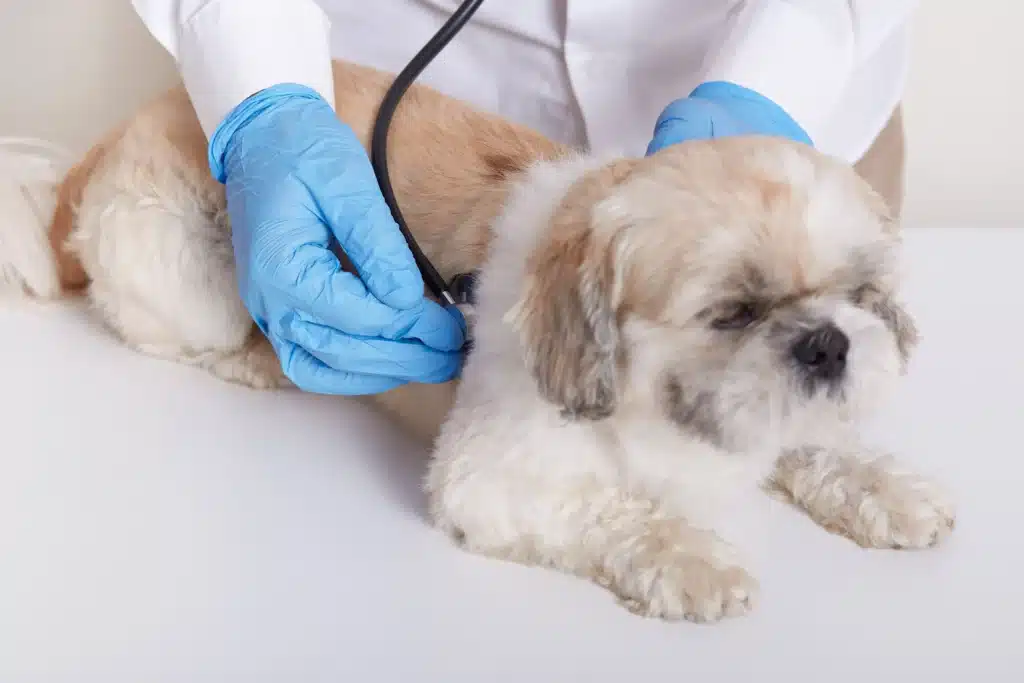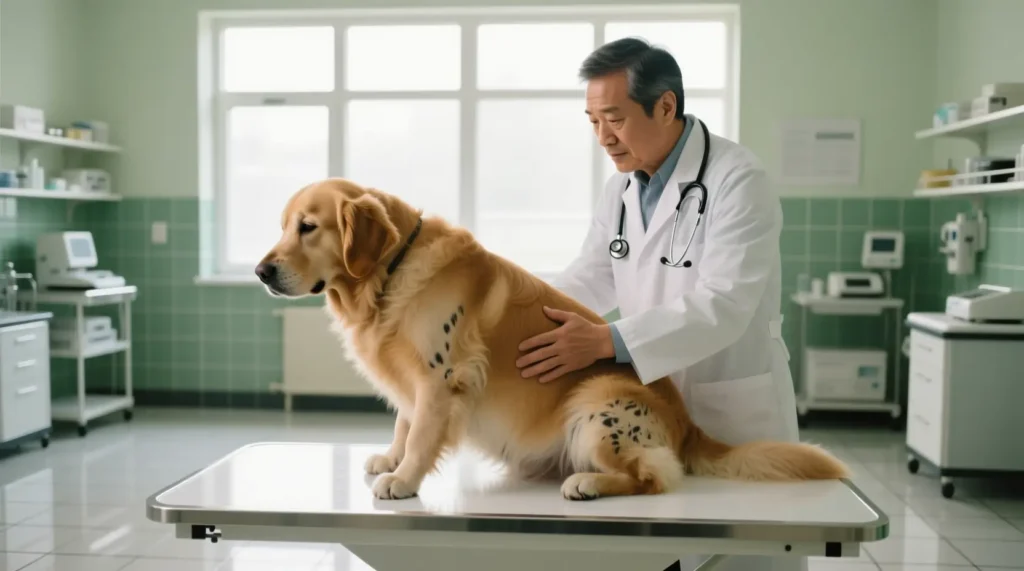Addison’s disease is adrenal hormone deficiency (cortisol ± aldosterone) that causes vague illness, electrolyte shifts, and, in crisis, shock. Dogs are the most-affected species; females and several breeds are over-represented.
What causes Addison’s disease in dogs? (Simple guide)
Most dogs get Addison’s disease because the immune system attacks the adrenal glands. Less often, the adrenal glands are damaged by medicines, tumors, infection or inflammation, or bleeding. Some dogs have a brain (pituitary) problem that stops the normal “ACTH” signal. A few dogs start with only low cortisol and normal electrolytes—this is called atypical Addison’s—and later develop full Addison’s.
1) Primary Addison’s (the common kind)
- What it is: The dog’s immune system mistakenly destroys the outer part of the adrenal glands (the cortex).
- What hormones are lost:
- Cortisol (a glucocorticoid) — helps with stress, appetite, blood sugar, and blood pressure.
- Aldosterone (a mineralocorticoid) — controls sodium, potassium, and body fluids.
- What this causes: Tiredness, poor appetite, vomiting/diarrhea, low blood pressure. Lab tests often show low sodium and high potassium.
2) Other primary (adrenal) causes
These also damage the adrenal cortex, but are not immune-related.
- Medication-related:
- Mitotane (an adrenal-destroying drug) and trilostane (a hormone-blocking drug) can, in rare cases or at high doses, push the adrenal glands too far and cause Addison’s-like hormone loss.
- Infiltrative disease:
- Cancer (like lymphoma or metastases) or granulomatous inflammation/infection can invade and damage the adrenal glands.
- Adrenal hemorrhage/ischemia:
- Sudden bleeding or loss of blood supply can injure the adrenal tissue and trigger an acute crisis.
3) Secondary Addison’s (pituitary cause)
- What it is: The pituitary gland in the brain does not release enough ACTH, the hormone that tells the adrenal glands to make cortisol.
- What hormones are affected: Mostly cortisol. Aldosterone is usually normal, because it is controlled by the kidney’s salt–water system.
- What this looks like: Dogs often have signs of low cortisol (tired, GI upset), but sodium and potassium can be normal. This can look just like atypical Addison’s on bloodwork.
4) Atypical Addison’s (glucocorticoid-only at first)
- What it is: Dogs have low cortisol but normal sodium and potassium at diagnosis.
- Why it matters: Some dogs later lose aldosterone too. Vets will recheck electrolytes over time to catch that change early.
Quick owner tips
- Not all Addison’s looks the same. Some dogs have classic low sodium/high potassium. Others do not—especially early or in secondary Addison’s.
- Medicines and other diseases matter. Tell your vet about mitotane, trilostane, past steroid use, cancers, infections, or any sudden collapse event.
- Expect follow-up tests. If your dog has atypical Addison’s, your vet will monitor electrolytes regularly to make sure aldosterone stays normal.
How common is Addison’s disease, and which dogs are at risk?
Short answer: Addison’s disease is uncommon in the general dog population—studies place prevalence around 0.06%–0.28% (some cohorts closer to 0.06%–0.09%). That means most dogs will never develop it, but certain breeds face a higher-than-average risk.
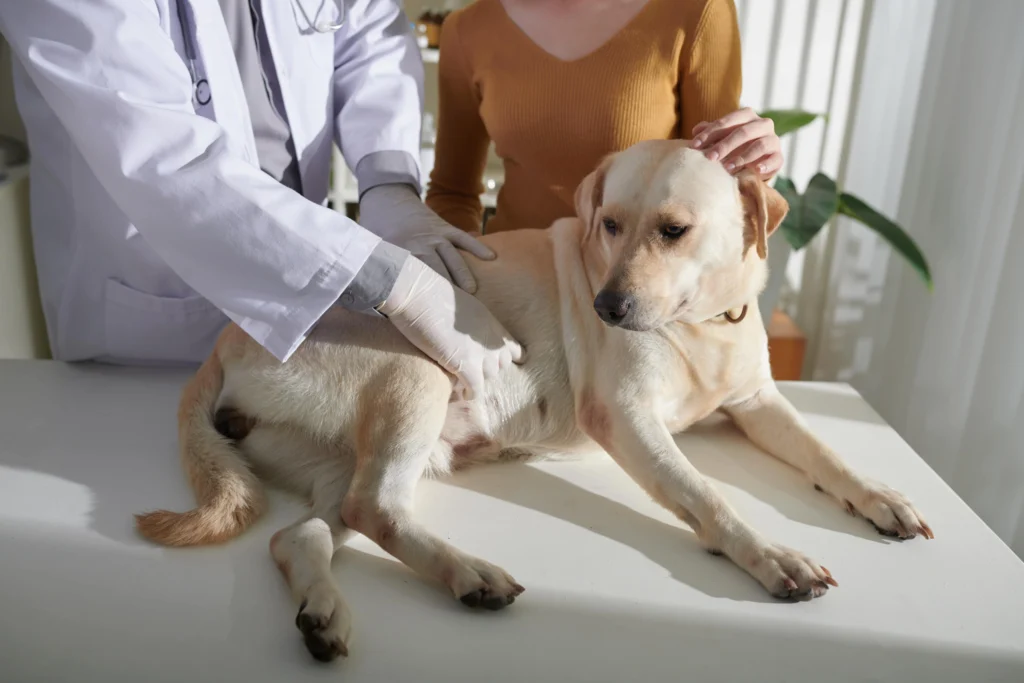
Breeds with higher risk
Veterinary references consistently over-represent the following breeds in Addison’s cases:
- Standard Poodle
- Portuguese Water Dog
- Nova Scotia Duck Tolling Retriever
- Bearded Collie
- Also noted: West Highland White Terrier, Soft-Coated Wheaten Terrier, Great Dane, and others
In several of these breeds, researchers have documented a heritable component—meaning genetics can increase susceptibility within family lines.
Age and sex patterns you may notice
- Typical onset: Young to middle-aged adults, though any age can be affected.
- Sex trend: Many datasets show a female skew, but this is not absolute.
What this means for owners
- If you live with a listed high-risk breed, learn the early, vague signs: on-and-off lethargy, poor appetite, vomiting/diarrhea, weight loss, and episodes that worsen with stress.
- Ask your vet about baseline screening when symptoms are nonspecific (for example, a resting cortisol to rule out Addison’s quickly).
- Keep solid medical records within families—because of the genetic signal, knowing relatives’ health history can help your vet spot patterns sooner.
Signs
If your dog has been “off” in a way you can’t quite pin down—some days fine, other days not—Addison’s disease (hypoadrenocorticism) could be on the shortlist. It’s a sneaky condition where the adrenal glands don’t produce enough stress hormones (primarily cortisol, often aldosterone), so everyday life and especially stress can tip a dog into feeling unwell.
Quick reminder: This post is educational, not a substitute for your veterinarian. If your dog is collapsing, weak, or vomiting blood, seek emergency care now.
The Early, Easy-to-Miss Signs
Addison’s often starts with vague symptoms that wax and wane—they come and go and may flare after a stressful event (boarding, a move, a new pet, storms, vet visits). Typical early signs include:
- Lethargy (more tired, less interest in play or walks)
- Reduced appetite
- Weight loss
- Vomiting and/or diarrhea
- Sometimes increased thirst and urination
Because dogs can bounce back between episodes, it’s easy to chalk it up to “a bug” or “something they ate.” The stress connection is a hallmark clue.
The Full Symptom Picture
As Addison’s progresses, patterns get clearer. You may see:
- General signs: persistent or intermittent lethargy, GI upset (vomiting/diarrhea), weight loss, dehydration, and low blood pressure (can look like weakness, faintness, or slow capillary refill in the gums).
- Electrolyte changes (classic but not universal):
- Hyponatremia (low sodium)
- Hyperkalemia (high potassium)
- Metabolic acidosis
These imbalances come from inadequate aldosterone, which normally helps the kidneys balance sodium and potassium.
- Hyponatremia (low sodium)
Some dogs have “atypical” Addison’s (cortisol deficiency without the classic electrolyte changes), so bloodwork can look deceptively normal—another reason vets rely on specific testing (ACTH stimulation test) when they’re suspicious.
Addisonian Crisis: What an Emergency Looks Like
An Addisonian crisis is a life-threatening crash that needs immediate veterinary care. Signs can include:
- Collapse or severe weakness
- Bradyarrhythmia (abnormally slow heart rhythm) due to severe hyperkalemia
- Profound dehydration and very low blood pressure
- Hypoglycemia (low blood sugar) — trembling, dullness, seizures in severe cases
- Azotemia (kidney values rising)
- Hemorrhagic vomiting/diarrhea (blood in vomit or stool)
This is an ICU-level emergency. Dogs typically need IV fluids, electrolyte correction, dextrose as needed, and fast-acting steroids, then long-term hormone replacement once stable.
When to Call the Vet
Reach out to your veterinarian if your dog has on-and-off GI upset, lethargy, weight loss, or increased thirst/urination—especially if episodes follow stress. Keep a brief timeline of flare-ups and any stressful triggers; that pattern helps your vet zero in faster.
ER now if you see collapse, extreme weakness, blood in vomit/diarrhea, a very slow heart rate, or gums that stay pale or take a long time to pink up after pressing (poor perfusion).
What Diagnosis and Treatment Usually Look Like (Briefly)
- Diagnosis: Basic labs may show the electrolyte pattern above, anemia, or azotemia but the ACTH stimulation test is the gold standard.
- Treatment: Lifelong hormone replacement is very manageable—typically a mineralocorticoid (e.g., DOCP injections or fludrocortisone) and low-dose glucocorticoid (prednisone), with dose adjustments for stress. Most dogs go on to live happy, active lives once stabilized.
Bottom line: Addison’s disease loves to masquerade as “random tummy troubles.” If symptoms ebb and flow and worsen with stress, ask your vet about Addison’s. Early recognition can prevent a crisis—and get your dog feeling like themselves again.
Does Addison’s disease come on suddenly?
Course: most dogs show intermittent, nonspecific signs for days to months; a subset presents acutely in crisis.
How is Addison’s disease diagnosed?
Step 1 (rule-out test): Resting serum cortisol.
- > 2 μg/dL effectively rules out Addison’s in non-critical dogs.
- < 2 μg/dL → proceed to ACTH stimulation testing.
Step 2 (confirmatory test): ACTH stimulation test (cosyntropin 5 μg/kg IV; 1-hour post).
- Minimal/no rise and post-ACTH cortisol < 2 μg/dL confirm glucocorticoid deficiency.
Supportive findings:
- Low Na:K ratio (< 27) suggests Addison’s but is not pathognomonic; used to prioritize testing.
- CBC often lacks a stress leukogram (no expected lymphopenia), and mild non-regenerative anemia may be present.
Guidelines: AAHA 2023 gives stepwise diagnostic and monitoring algorithms.
What is atypical Addison’s disease?
Definition: glucocorticoid deficiency without electrolyte changes at diagnosis.
Risk: electrolytes can later decline; monitor sodium/potassium periodically.
How is an Addisonian crisis treated? (Emergency)
Immediate care:
- IV isotonic crystalloids for shock and dehydration.
- Dextrose if hypoglycemic.
- 10% calcium gluconate for cardioprotection in severe hyperkalemia; dextrose ± insulin or sodium bicarbonate to shift K⁺ intracellularly.
- IV glucocorticoid (dexamethasone sodium phosphate)—does not interfere with a pending ACTH test.
- Start mineralocorticoid if the electrolyte pattern indicates deficiency.
How is Addison’s disease treated long-term?
Goal: replace missing hormones and maintain normal electrolytes and clinical status.
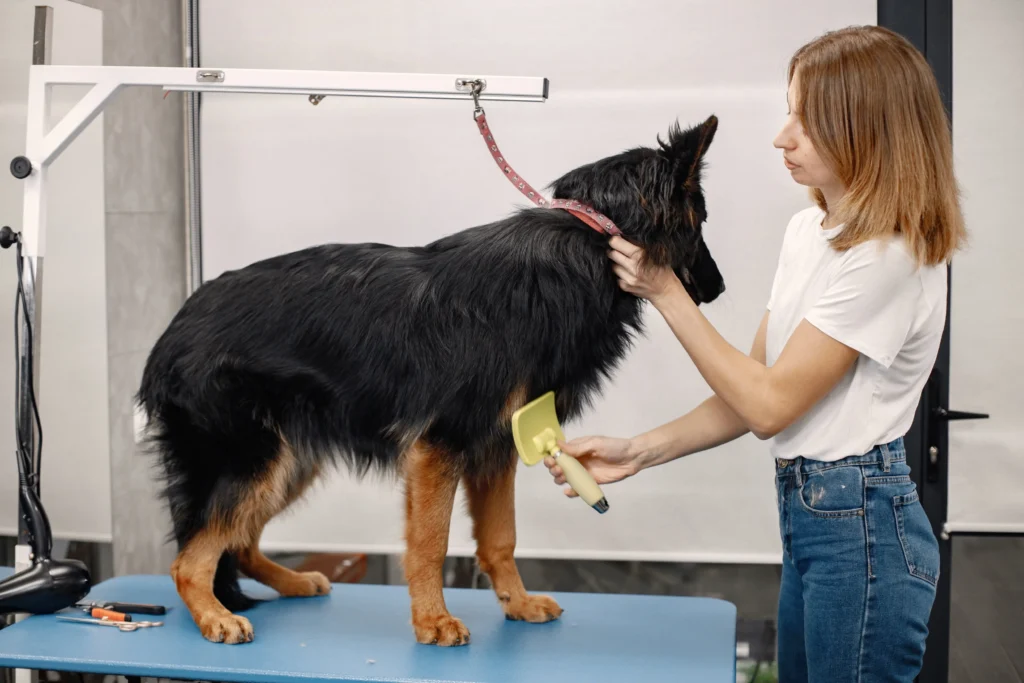
Mineralocorticoid replacement
- DOCP (desoxycorticosterone pivalate) injection.
- Evidence supports lower starting doses (~1.1–1.5 mg/kg) with individualized intervals instead of the historical 2.2 mg/kg.
- Randomized/controlled and cohort data show low-dose DOCP is safe and effective for most dogs.
Glucocorticoid replacement
- Prednisone daily; taper to ~0.05–0.1 mg/kg/day minimum effective dose after stabilization.
- Stress dosing during illness, surgery, or major stress per veterinarian plan.
Monitoring
- Recheck electrolytes and clinical signs; adjust DOCP dose/interval and prednisone.
- AAHA 2023 outlines visit timing and targets.
What is the prognosis and life expectancy?
Prognosis: good to excellent with consistent therapy and monitoring.
Outcome: most dogs return to normal activity and expected lifespan.
Is Addison’s disease genetic or hereditary?
Yes, heritable risk exists in several breeds; mode can be autosomal recessive in some lines (e.g., Standard Poodle, Portuguese Water Dog, Nova Scotia Duck Tolling Retriever). Breed predispositions are consistently reported.
What are the types of Addison’s disease in dogs?
- Primary (typical): cortisol and aldosterone deficiency; electrolytes abnormal.
- Atypical (primary): cortisol deficiency with normal electrolytes initially.
- Secondary: pituitary ACTH deficiency; resembles atypical glucocorticoid-only Addison’s.
How do owners manage Addison’s disease at home?
- Give medications on schedule; do not stop suddenly.
- Keep fresh water available.
- Learn crisis signs (collapse, persistent vomiting/diarrhea, weakness) and seek emergency care.
- Keep a stress-dose prednisone plan from your veterinarian.
Differential diagnoses when Na:K ratio is low
Low Na:K can also occur with renal failure, severe GI disease, trichuriasis (whipworms), body cavity effusions, pregnancy. Use the ratio to triage; confirm with ACTH testing.
Owner pathway (checklist)
- Screen: resting cortisol. > 2 μg/dL → Addison’s unlikely; < 2 μg/dL → ACTH stim.
- Confirm: ACTH stimulation test (pre/post cortisol).
- Stabilize crisis: fluids, dextrose if needed, hyperkalemia management, IV dexamethasone.
- Maintain: DOCP injection (often ~1.1–1.5 mg/kg start) + low-dose prednisone; recheck electrolytes and adjust.
- Monitor: scheduled rechecks; stress-dose plan for illness or surgery.
While Addison’s is rare overall, breed and family history matter. Early recognition in at-risk dogs leads to faster diagnosis and an excellent long-term outlook with proper treatment.
FAQ of Addison’s disease in dogs
What’s the best first test?
Resting cortisol. > 2 μg/dL rules out Addison’s in most non-critical dogs. < 2 μg/dL → ACTH stim.
Which lab clue should I not miss?
Na:K < 27 with compatible signs suggests Addison’s and should trigger ACTH testing. It is not diagnostic by itself.
What is atypical Addison’s?
Glucocorticoid deficiency without electrolyte changes at diagnosis; electrolytes can fall later—monitor.
Which steroid is safe before ACTH testing?
Dexamethasone sodium phosphate (IV) does not interfere with ACTH stim results.
Is low-dose DOCP effective?
Yes. Trials and cohorts show ~1.1–1.5 mg/kg starting doses control most dogs; adjust to effect.
What is the long-term outlook?
Excellent with replacement therapy and monitoring; many dogs live normal lifespans.
